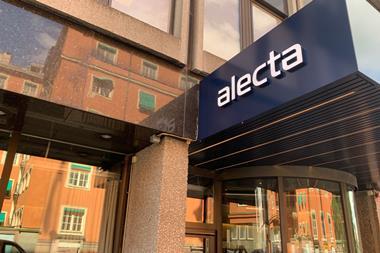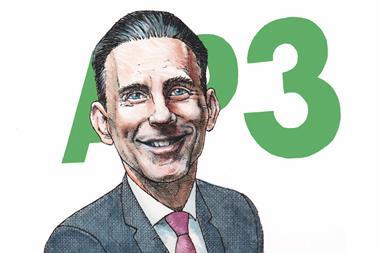Sweden’s AP1 reported a 6.6% investment return for the first half of this year despite a big loss on its real estate holdings, narrowly beating its peer AP4 at the end of a period in which it boosted its equity exposure and bond duration.
Publishing its interim report, the national pensions buffer fund announced on Thursday that assets under management grew to SEK446.4bn (€38.6bn) between January and June 2023 following the return – SEK27.8bn in absolute terms – and an outflow of SEK2.6bn to Sweden’s income pension system.
Kristin Magnusson Bernard, the Stockholm-based fund’s chief executive officer, said: “Positive earnings contributions came from listed equities and from foreign exchange, which offset the negative return from unlisted real estate.”
While equities produced a 13.94% return for AP1 in the first half, its real estate investments suffered a 7.01% loss.
Commenting on AP1’s investment tactics during the first half, Magnusson Bernard said: “In the hesitant, but over time positive market sentiment, we gradually increased the allocation to equity and the duration, i.e sensitivity to interest rates, returning to just above neutral levels after holding a more conservative position last year.”
The interim report shows AP1’s exposure to equities increased to 57.2% by the end of June from 47.9% at the beginning of January, with the bulk of this change relating to developed market equities, whose allocation grew to 35.8% from 29.1%.
The buffer fund’s Swedish equities allocation, meanwhile, expanded to 19.4% from 18.8%.
The property allocation shrank to 15.6% from 17.7%.
“The real estate companies we own have retained their excellent credit ratings and continuous access to capital,” Magnusson Bernard said, adding: “We have also committed to maintain our financing strategies to uphold the trust from investors.”
Given the higher cost of capital, concern had grown for commercial property firms in the first half, she said, with those that had expanded heavily through extensive borrowing being punished harshly on the stock exchange. However, contracts for office premises were often index-linked to inflation, she said, which propped up real estate companies’ income.
“Very few transactions took place on the market during the period, leading to valuations depreciating somewhat, particularly in the Nordics,” she said, but added that in markets where external valuers made larger write-downs more rapidly, such as the UK, the market had seemed to stabilise faster.
Ten days ago, AP4 reported a return of 6.0% after costs between January and June. Sweden’s other two large national pension buffer funds, AP2 and AP3, have yet to publish their interim reports.
AP1 said that in the first half of 2023, it had “seemed as if the world’s investors struggled to interpret risk, and between prolonged periods of slow activity, the tentative upturns grew almost unnoticeably stronger”.
The fund’s CEO said there were no signs “the tragic invasion of Ukraine” would end soon, and that geopolitical tensions and energy dependencies were likely to continue to affect the near-term investment climate, with great uncertainty, substantial market volatility and high cost of capital characterising the world.
But she struck a positive note about the outlook, saying: “Going forward, expected market returns are likely to be somewhat lower, but hopefully more sustainable, with viable business models being strengthened, and higher prices bringing about prudent management of limited resources.”
AP1’s board has initiated a review of the fund’s ten-year old governance model and risk framework, she said.
“The aim is to ensure that our risk-taking framework provides us with the best conditions possible to fulfil our statutory mandate and that it is on a par with the most professional pension funds around the world,” Magnusson Bernard said.
Read the digital edition of IPE’s latest magazine






























No comments yet